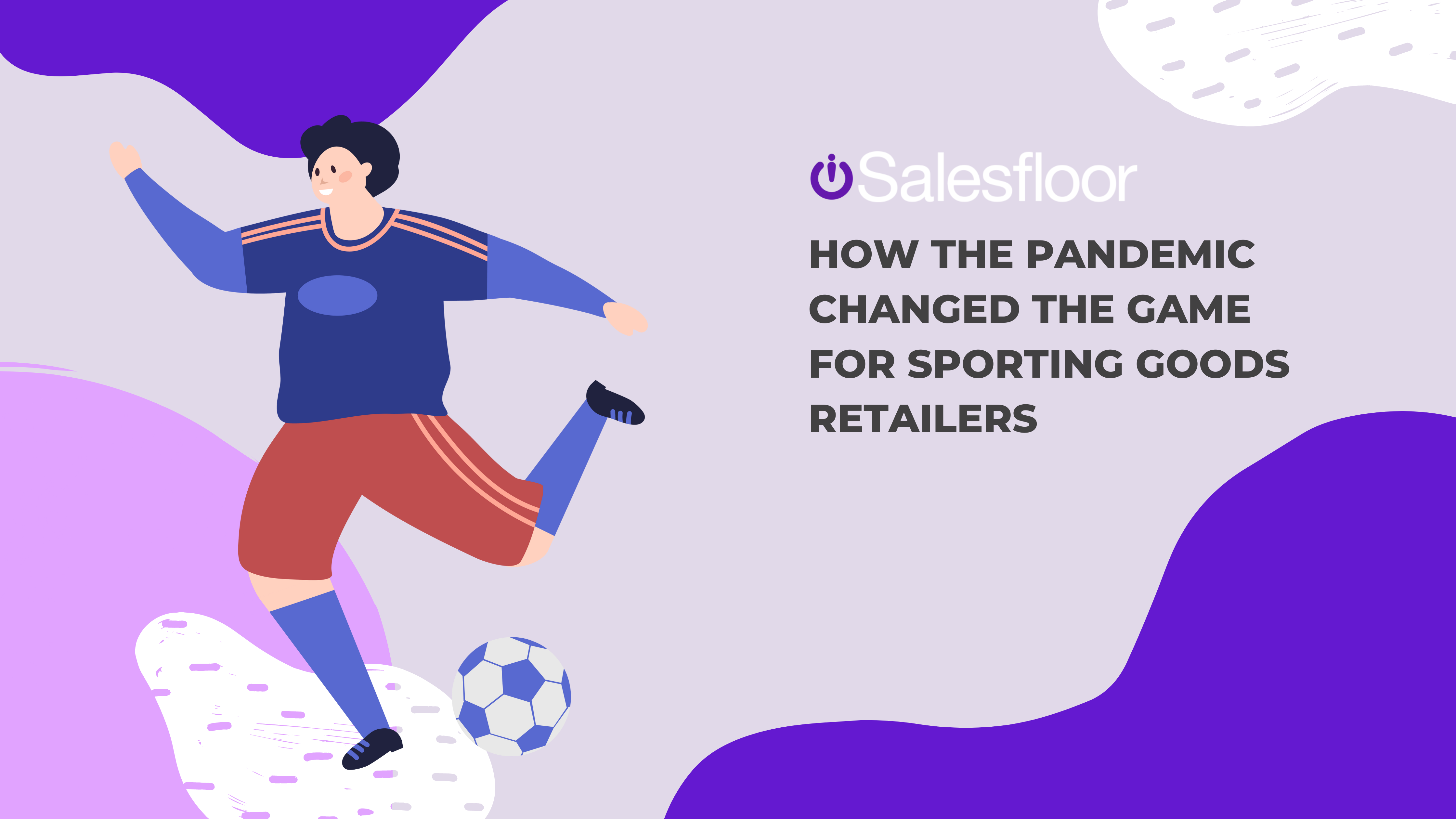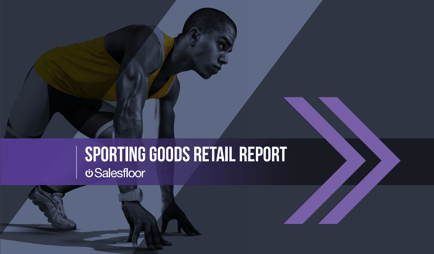3 min read
How the Pandemic Changed the Game For Sporting Goods Retailers
![]() David Campbell
:
Feb 16, 2022
David Campbell
:
Feb 16, 2022

For many people, the morning workout is their favorite part of the day. It can wake both the body and the brain better than a cup of coffee.
Getting the heart beating and a good sweat going isn’t just physically healthy, it feels good and has well-documented mental health benefits as well. Moreover, there’s a sense of community—group runs, working out with friends, spotting strangers at the gym. At least, there was, right up until March 2020, of course.
COVID-19 hit the sporting goods sector particularly hard, forcing both stores and gyms to shut down. Brands’ consumer-facing stores and gymnasium wholesale clients were shut down. For the first time since the 2008 financial crisis, the sporting goods sector shrank. According to the global health and fitness association IHRSA, gyms and fitness facilities were hit harder than other sectors, with more than a quarter of all health and fitness facilities throwing in the towel. Having taken such a serious hit, it’s important for the survivors to pull out all the stops if they want to come out of it a winner.
From Athletics to Athleisure
One of the most pronounced effects the pandemic had on the sporting goods market was driving people away from gymnasiums or team sports and into home basements or walking-running cohorts. In general, while health-conscious consumers are still driving sporting goods retail growth, according the retail researchers at McKinsey & Company, approximately two-thirds of that growth will come from athleisure as consumers shift away from gyms and into less formal, personalized workout routines from home.
Other sectors experiencing significant growth include women’s athletic wear and the Chinese market. However, fashion brands are increasingly entering this space as well. Sports brands and retailers will need to rely on specialized market knowledge and innovation to keep up.
The Digital Deep End
Hopefully by now no one needs to be reminded how COVID shut down in-store shopping and drove consumers to online stores as they sought to reorganize their workouts in light of gymnasium and recreation centre closures. Digitally enabled fitness was pushed further into the spotlight (though the trend had already been developing for some time), particularly those that provide simulated community setting (similar to Peloton’s famous cycling programs). However, enabling such experiences can require significant digital infrastructure.

Image Source: Giorgia Travato; Unsplash
That’s why sports retailers should also consider taking their marketing even further online with influencer and social media marketing. In addition to the hardware, applications, and storage investments required to enable digital sports events, investing in these aspects of online marketing is critical. Events and associations simply don’t have the same reach or credibility as social media influencers, making it imperative that sports brands work directly with athletes as role models and brand ambassadors to build awareness and engagement.
Direct to Athlete
Of course, we can’t talk about the digital future of the sporting goods industry without addressing direct sales channels, namely online stores. Direct-to-Consumer (DTC) sales understandably ballooned during the pandemic, especially considering it was many retailers sole revenue lifeline during initial lockdowns. Now, with big brands and manufacturers increasingly selling directly to athletes, it’s more important than ever for retailers to provide exceptional online experiences for their customers.
 When you’re selling directly to athletes and courting influencers though, it’s important that you’re not driving customers to any old online store. The online experience has evolved into more than just an online inventory, shopping cart, and checkout.
When you’re selling directly to athletes and courting influencers though, it’s important that you’re not driving customers to any old online store. The online experience has evolved into more than just an online inventory, shopping cart, and checkout.
Today’s sports enthusiasts want to be able to communicate directly with knowledgeable associates and sports equipment experts using online guided-selling and eventing applications. They want virtual stores where they can peruse products at home but still easily connect with an associate in the store, and they want to share and celebrate easily through social media integrations. The better your online experience, the more value you can add both for brands reconsidering retailer relationships as well as for your valued clients.
Image Source: Shingi Rice; Unsplash
Quick Reflexes
Make no mistake, retail has always been a competitive game, so it’s always been important for businesses to be agile. COVID-19 just made the ability to respond quickly to changing market conditions less a good idea and more of an essential survival skill. Whether it comes down to solving supply-chain problems (sporting goods are feeling the pain as much as any other sector), having robust digital infrastructure that can support new applications and services online athletes demand, or changing marketing and sales strategies to respond to new lockdowns and re-openings, being agile is must-have quality for sports retailers going forward.
The Takeaway
The onset of the COVID-19 pandemic dramatically transformed athletics as we knew them and rewrote the rules of the game for sporting goods retailers. With a quarter of fitness facilities closed for good, and the surviving gyms endlessly closing and reopening, all while the market in general shifts towards individual, socially distant, or cohort-driven outdoors athletics (and apparel), retailers have got to be tactical with their decisions. Being digitally agile with the appropriate online infrastructure to address both customer needs and supply-chain issues and being strategic about which sectors to target and how to market to them will help retailers realize superior results.
Learn how Salesfloor is helping retailers to navigate the post-pandemic reality and meet customers wherever they are shopping by connecting with a Retail Strategist today.





